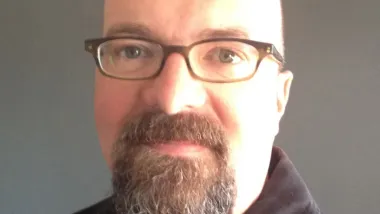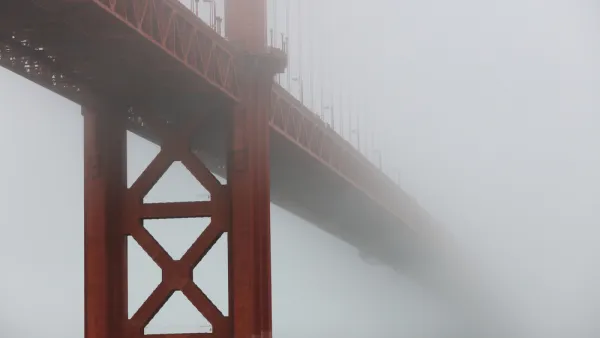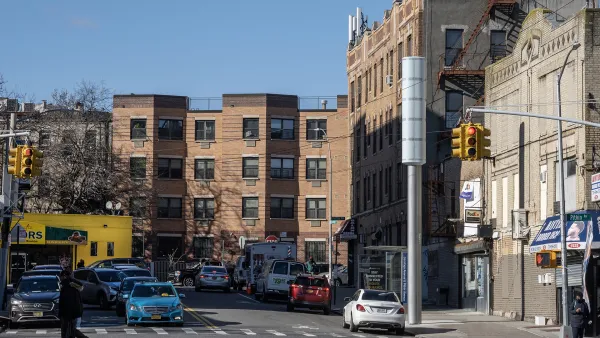You may have noticed that over the past few years we've learned a lot more about how the brain works. This is mostly due to advances in functional neuroimaging (fMRI), which makes brain scanning much less onerous and dangerous (no radiation involved). Researchers are using this new access to the brain to send it through various puzzles and thoughts and seeing where and how the brain reacts. Josh Greene is an assistant professor at Harvard, and he has used his research to explore questions of moral judgement and decisionmaking. One puzzle he's looked at is called the "Trolley Problem." Here's the setup:
You may have noticed that over the past few years we've learned a lot more about how the brain works. This is mostly due to advances in functional neuroimaging (fMRI), which makes brain scanning much less onerous and dangerous (no radiation involved). Researchers are using this new access to the brain to send it through various puzzles and thoughts and seeing where and how the brain reacts.
Josh Greene is an assistant professor at Harvard, and he has used his research to explore questions of moral judgement and decisionmaking. One puzzle he's looked at is called the "Trolley Problem." Here's the setup:
1. You're standing near the railroad tracks, and a track switch is nearby. There are five men working on the tracks, and a train is hurtling towards them. If nothing is done, they will surely die. If you flip the switch, the train will be rerouted to another track, where there is only one man working. Do you flip the switch?
2. This time, you're standing above the railroad tracks on a footbridge, and there is a fat man standing next to you. The train is still hurtling towards those five men. If you push the fat man off of the bridge, you'll stop the train and save the other five. Do you do it?

On the surface, it's the same moral equivalency: one man's life in exchange for five others. But most people say YES to flipping the switch, and NO to pushing the man. Philosophers have tackled the discrepancy for ages, but now science has an answer. The first question stimulates a part of the prefrontal cortex, which presumably is where our monkey brains learned over generations the instinct to save as many lives as possible. The second question stimulates that area, but then a completely different area of the brain kicks in that is perhaps even more primitive and strong that says, "DO NOT KILL." So the problem ricochets around these two sections of the brain for a minute, before DO NOT KILL wins.
What this reflects, according to Josh, is that common-sense, gut instinct thinking can be overpowering, and often fails to account for the larger picture. As Josh puts it, "our social instincts were not designed for the modern world." Morals are actually wired into the brain, but have developed over thousands of years and aren't well-suited for abstraction, like, say, global warming.
Here's one more moral equivalency Josh is interested in:
1. You come upon a woman drowning in a lake. You're wearing a $1000 suit, which will be ruined if you jump in the water and save her. Do you do it?
2. You get a plea in the mail that says a small donation of $1000 will save the life of a woman in peril that you do not know and lives on the other side of the world. Do you send in the money?
This one's a lot simpler to answer- most of us would save the woman, but not mail in the donation. But why? Josh proposes that it is because the "up close and personal" person stimulates our primitive emotional instincts, whereas the other person is an abstraction and therefore our perceived moral obligation to them is significantly less. According to Josh, we've only taught ourselves to think abstractly for a hundred years or more. We've got a long way to go before abstract thinking is hardwired.
This is exactly the struggle one faces when dealing with a NIMBY: that person is engaged with the emotional charge of the up close and personal, and has difficulty abstracting out to the greater good. To anyone who has dealt with NIMBYs, this is an obvious conclusion. But for me, Josh's research adds a new perspective on the NIMBY dilemma. We'll rarely win by approaching the pre-frontal cortex- the emotional, primitive, local brain will always override it. We have to find a way to appeal to the gut when promoting an idea to local residents.
I spoke once at a community meeting in Livermore, California about the benefits of transit-oriented development. As soon as I was done, a woman stepped up to the mic and told me, "I live across the street from this new planned development, and the people in the upper floors are going to be able to see directly into my front window! What if I'm naked?" The next woman stepped up and said, "We want a Trader Joe's we can walk to. Get us one."
There's a pretty good solution right there- if you want your project to appeal to the primitive brain, go for the groceries.

Analysis: Cybertruck Fatality Rate Far Exceeds That of Ford Pinto
The Tesla Cybertruck was recalled seven times last year.

National Parks Layoffs Will Cause Communities to Lose Billions
Thousands of essential park workers were laid off this week, just before the busy spring break season.

Retro-silient?: America’s First “Eco-burb,” The Woodlands Turns 50
A master-planned community north of Houston offers lessons on green infrastructure and resilient design, but falls short of its founder’s lofty affordability and walkability goals.

Test News Post 1
This is a summary

Analysis: Cybertruck Fatality Rate Far Exceeds That of Ford Pinto
The Tesla Cybertruck was recalled seven times last year.

Test News Headline 46
Test for the image on the front page.
Urban Design for Planners 1: Software Tools
This six-course series explores essential urban design concepts using open source software and equips planners with the tools they need to participate fully in the urban design process.
Planning for Universal Design
Learn the tools for implementing Universal Design in planning regulations.
EMC Planning Group, Inc.
Planetizen
Planetizen
Mpact (formerly Rail~Volution)
Great Falls Development Authority, Inc.
HUDs Office of Policy Development and Research
NYU Wagner Graduate School of Public Service





























